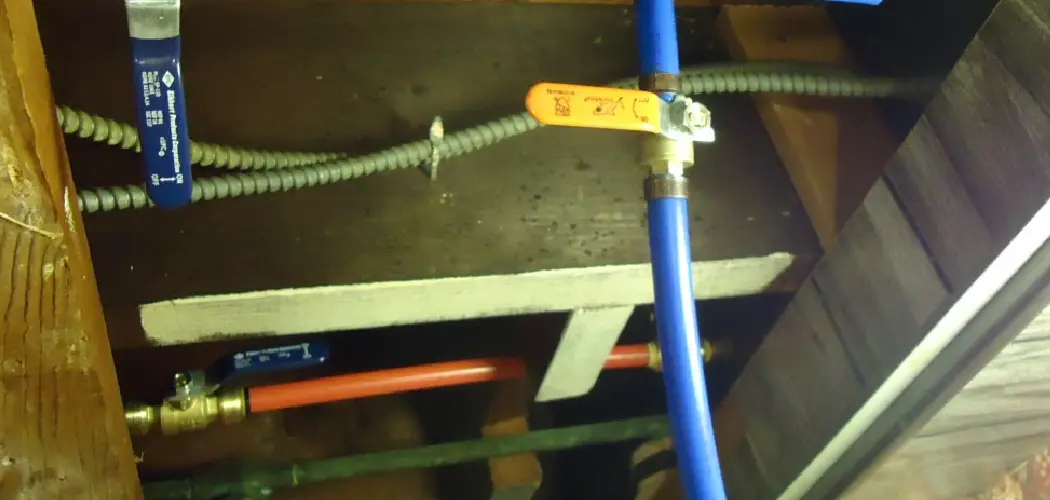Covering exposed PEX (cross-linked polyethylene) pipes is an important task to ensure their protection and enhance the aesthetic appeal of your space. PEX pipes are known for their flexibility and durability, but when they are left exposed, they can be susceptible to damage from UV rays, physical impacts, and extreme temperatures. Properly covering these pipes involves selecting appropriate materials and methods to shield them effectively. In this comprehensive guide, we’ll explore effective strategies and practical tips on how to cover exposed pex pipe. This process typically includes using pipe insulation, decorative covers, or enclosures that match your interior or exterior design.
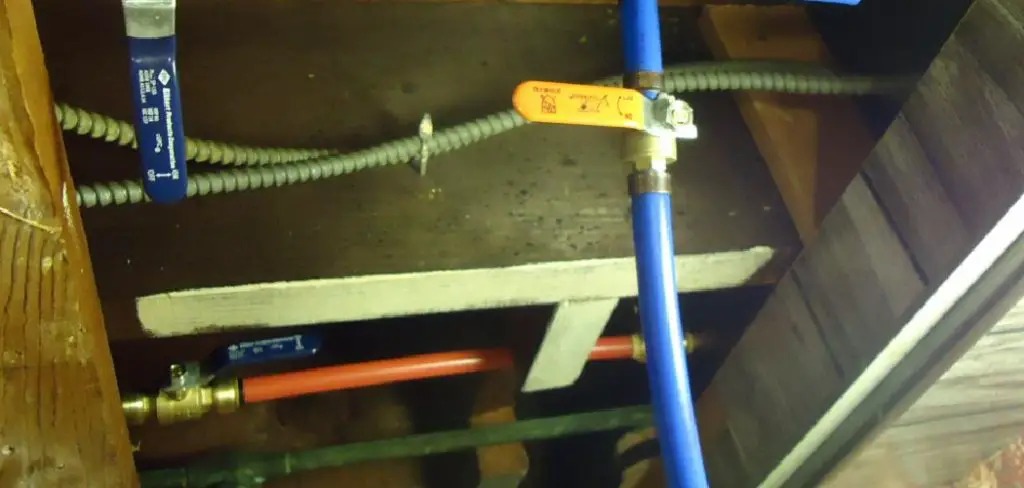
Key considerations include ensuring the covering materials are UV-resistant for outdoor applications, providing adequate ventilation to prevent moisture buildup, and securing the covers to prevent displacement. By addressing these factors, you not only extend the lifespan of your PEX pipes but also maintain a tidy and safe environment. This proactive approach helps prevent potential issues such as leaks or bursts, ensuring your plumbing system remains efficient and reliable.
Importance of Covering Exposed PEX Pipes
Covering exposed PEX pipes is crucial for several reasons. Firstly, it significantly reduces the risk of damage caused by environmental factors such as UV rays, which can degrade the pipes’ material over time and compromise their integrity. Physical impacts, such as accidental knocks or abrasions, are also less likely to occur when the pipes are properly shielded.
Additionally, insulating exposed PEX pipes helps maintain their temperature, preventing the pipes from freezing in cold weather or overheating in extreme heat, both of which could lead to bursts and leaks. From an aesthetic standpoint, covered PEX pipes contribute to a cleaner and more polished look, whether indoors or outdoors, enhancing the overall appearance of your property.
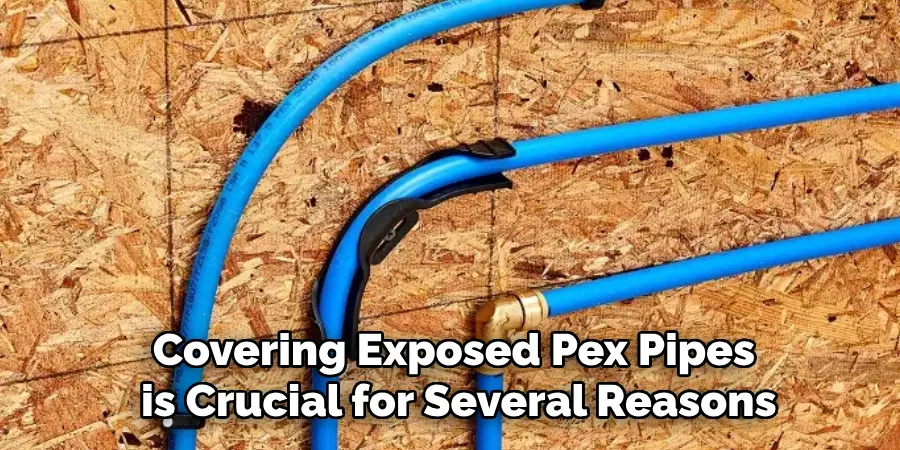
Taking the time to cover your PEX pipes can lead to substantial savings by preventing costly repairs and water damage, ensuring a more reliable and efficient plumbing system in the long run.
Understanding PEX Piping and its Characteristics
PEX piping, short for cross-linked polyethylene, has revolutionized modern plumbing due to its remarkable flexibility, durability, and ease of installation. Unlike traditional materials like copper or PVC, PEX pipes are highly resistant to scaling and corrosion, ensuring a longer lifespan with minimal maintenance.
The cross-linking in the polyethylene structure gives PEX its unique flexibility, allowing it to bend around obstacles and reduce the need for multiple fittings, which further decreases the potential for leaks. Additionally, PEX piping can expand and contract in response to temperature changes, making it highly resistant to freezing and thawing cycles, which often lead to bursts in more rigid piping materials.

With its inherent resistance to UV light, PEX piping is a versatile choice for both indoor and outdoor installations, although additional protection from UV exposure is necessary for prolonged outdoor applications. The thermal conductivity of PEX is also lower than that of metal pipes, providing better insulation and energy efficiency. Overall, these characteristics make PEX piping an excellent choice for residential and commercial plumbing systems, offering a combination of reliability, versatility, and cost-effectiveness.
Common Applications of PEX Piping
PEX piping has become a preferred choice in a range of plumbing applications due to its versatility and reliability. One of the most common applications is in residential water supply systems. PEX’s flexibility allows it to be easily routed through walls and floors, making it ideal for new construction and retrofitting older homes.
Additionally, it’s often used in radiant floor heating systems, where its ability to withstand extreme temperatures and resist scaling is particularly beneficial. Another key application is in fire sprinkler systems, where its durability and ease of installation make it a cost-effective option. Commercial buildings also leverage PEX piping for both hot and cold water plumbing, taking advantage of its resistance to corrosion and ability to handle high water pressure.
In outdoor settings, PEX is frequently used for irrigation systems and water service lines, although it’s crucial to cover and protect it from UV exposure for extended lifespan. Overall, the adaptability of PEX piping makes it suitable for a variety of plumbing needs, providing a reliable and efficient solution for both residential and commercial applications.
Reasons for Covering Exposed PEX Pipes
Covering exposed PEX pipes presents numerous advantages that contribute to both the functionality and aesthetics of your plumbing systems. One of the primary reasons is protection from UV light. When PEX pipes are exposed to direct sunlight, the ultraviolet rays can degrade the material, leading to brittleness and eventually causing the pipes to fail.
Another significant reason is prevention of physical damage. Unprotected pipes are vulnerable to impacts from accidental knocks, abrasions, and even foot traffic in accessible areas, all of which can result in compromised integrity and leaks. Additionally, temperature regulation is critical; insulating the pipes helps maintain consistent water temperatures, preventing the pipes from freezing in winter or overheating in summer, thereby reducing the risk of bursts and inefficient water heating.
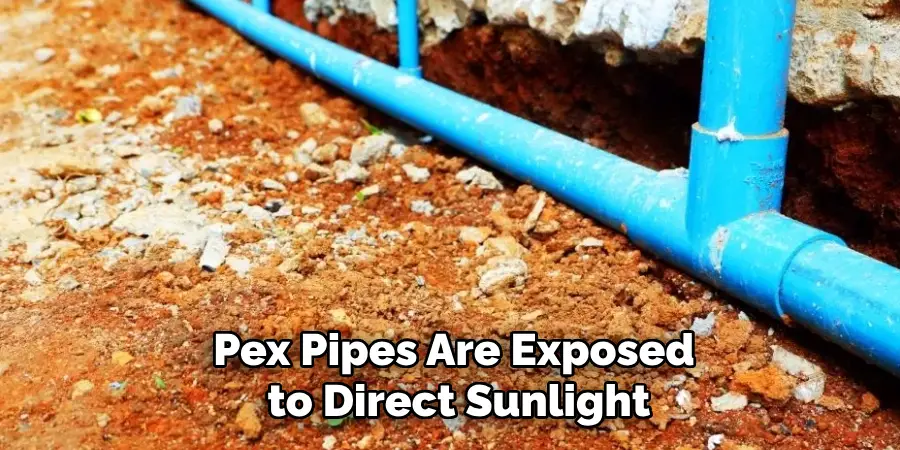
From a visual perspective, covering PEX pipes contributes to a neater and more organized appearance in both residential and commercial settings, which is especially important in exposed areas such as basements, garages, or exterior walls. Finally, by implementing these protective measures, you can achieve cost savings over time through the reduced need for repairs and maintenance, extending the lifespan of your plumbing installation and ensuring a reliable water delivery system.
10 Methods How to Cover Exposed Pex Pipe
1. Use Foam Pipe Insulation
One of the most effective methods to cover exposed PEX pipes is to use foam pipe insulation. Foam pipe insulation is available in various sizes to fit different pipe diameters and is typically made from polyethylene or rubber. This material is flexible, easy to install, and provides excellent thermal insulation, protecting the pipes from freezing temperatures. To apply foam pipe insulation, simply cut it to the desired length, open the pre-slit section, and slide it over the PEX pipe. Secure the insulation with insulation tape or zip ties to ensure it stays in place. This method not only covers the pipes but also enhances their thermal efficiency, reducing heat loss.
2. Install PVC Pipe Coverings
PVC pipe coverings are another robust option for protecting exposed PEX pipes. PVC coverings are durable, resistant to impact, and can withstand harsh environmental conditions. These coverings come in various sizes and can be painted to match the surrounding decor. To install PVC pipe coverings, measure the length of the exposed PEX pipe and cut the PVC pipe accordingly. Slide the PVC covering over the PEX pipe and secure it at both ends with pipe brackets or clamps. This method provides a rigid and protective shell around the PEX pipe, shielding it from physical damage and UV exposure.
3. Utilize Flexible Pipe Wraps
Flexible pipe wraps, such as fiberglass or foam tape, are ideal for covering PEX pipes in tight or irregular spaces. These wraps are available in rolls and can be cut to the desired length. To apply a flexible pipe wrap, start at one end of the exposed pipe and wrap the material around the pipe, overlapping each layer slightly to ensure full coverage. Secure the ends with tape or zip ties. Flexible pipe wraps conform to the shape of the pipe and provide a protective barrier against temperature fluctuations and minor physical impacts. This method is especially useful for covering pipes in areas with limited space.
4. Encase Pipes in Wall or Ceiling Cavities
For a more permanent and aesthetically pleasing solution, consider encasing exposed PEX pipes within wall or ceiling cavities. This method involves creating a false wall or ceiling section to hide the pipes. First, determine the path of the exposed pipes and mark the area where the false wall or ceiling will be constructed. Use drywall or plywood to create the enclosure, ensuring it is securely fastened to the existing structure. Add insulation material inside the cavity to provide additional protection and thermal insulation for the pipes. This method effectively hides the pipes while maintaining the overall aesthetic of the space.
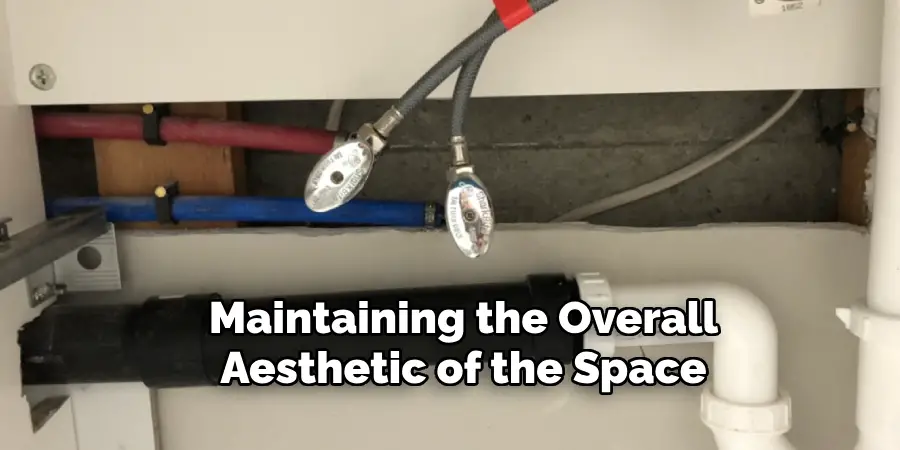
5. Apply Pipe Sleeves
Pipe sleeves, typically made from foam or rubber, are designed specifically for covering and insulating pipes. These sleeves are available in various sizes to fit different pipe diameters and can be easily cut to length. To apply a pipe sleeve, measure the length of the exposed PEX pipe and cut the sleeve accordingly. Slide the sleeve over the pipe, ensuring it fits snugly. Secure the sleeve with insulation tape or zip ties. Pipe sleeves provide a neat and efficient way to cover exposed PEX pipes, offering thermal insulation and protection from physical damage.
6. Use Decorative Pipe Covers
Decorative pipe covers offer an aesthetically pleasing way to conceal exposed PEX pipes, especially in visible areas such as living rooms or bathrooms. These covers are available in various materials, including wood, metal, and plastic, and can be painted or stained to match the decor. To install a decorative pipe cover, measure the length and diameter of the exposed pipe and select a cover that fits. Attach the cover to the wall or floor using brackets or adhesive, ensuring it is securely fastened. Decorative pipe covers not only protect the pipes but also enhance the visual appeal of the space.
7. Create a Pipe Chase
A pipe chase is a built enclosure that hides plumbing pipes along walls or ceilings. To create a pipe chase for exposed PEX pipes, first, determine the path of the pipes and mark the area where the chase will be built. Use framing lumber to construct a rectangular or square chase around the pipes, ensuring it is securely fastened to the existing structure. Cover the frame with drywall or plywood, and finish it with paint or wallpaper to match the surrounding decor. This method provides a permanent and concealed solution for covering exposed PEX pipes, protecting them from damage and improving the aesthetics of the space.
8. Apply Heat Tape
In colder climates, applying heat tape to exposed PEX pipes can provide additional protection against freezing temperatures. Heat tape is an electrical heating element that wraps around the pipe and provides consistent heat to prevent freezing. To apply heat tape, wrap it around the exposed PEX pipe, following the manufacturer’s instructions for spacing and installation. Secure the heat tape with electrical tape or zip ties. Cover the pipe and heat tape with foam insulation to enhance thermal efficiency and protect the heating element. This method is particularly useful for outdoor or unheated spaces where freezing is a concern.
9. Use Pipe Housings or Enclosures
Pipe housings or enclosures are pre-fabricated covers designed specifically to protect and conceal plumbing pipes. These housings are available in various sizes and materials, such as plastic, metal, or wood. To install a pipe housing, measure the length and diameter of the exposed PEX pipe and select a housing that fits. Secure the housing to the wall or floor using brackets or adhesive, ensuring it is securely fastened. Pipe housings provide a durable and protective barrier around the PEX pipes, shielding them from physical damage and environmental exposure.
10. Incorporate Pipes into Decorative Elements
Another creative way to cover exposed PEX pipes is to incorporate them into decorative elements within the space. For example, pipes can be enclosed within custom-built shelving units, cabinetry, or furniture pieces. To do this, design the decorative element to include a space for the pipes, ensuring they are adequately covered and protected. Use materials that match the existing decor and provide sufficient insulation and protection for the pipes. This method not only conceals the pipes but also adds functional and aesthetic value to the space.

Compliance with Building Codes and Regulations
When undertaking any project to cover exposed PEX pipes, it is crucial to ensure compliance with local building codes and regulations. Building codes are established to ensure the health, safety, and general welfare of occupants. Therefore, before beginning any work, verify the specific requirements in your area by consulting local building authorities or a licensed contractor.
Key considerations typically include ensuring that pipe covering materials are fire-resistant, providing adequate access for maintenance, and following guidelines for insulating and supporting pipes. Failure to comply with these regulations may result in fines, required modifications, or safety hazards. Ensuring that your installations meet the necessary codes and standards will provide peace of mind and contribute to the longevity and safety of your plumbing system.
Things to Consider When Covering Exposed PEX Pipes
Accessibility:
When covering PEX pipes, it’s important to ensure that they remain accessible for future repairs or maintenance. Choose methods that allow for easy removal of coverings if necessary. For example, using removable decorative covers or creating access panels in enclosures can facilitate quick access without significant demolition.
Insulation:
Proper insulation is essential to maintain the efficiency of your plumbing system, especially in areas prone to extreme temperatures. Ensure that insulation materials are properly installed to prevent heat loss in hot water pipes and to protect cold water pipes from freezing.
Aesthetics:
Consider how the covering method will blend with the overall decor of the space. Decorative options like custom-built enclosures or pipe covers should complement the existing design elements, enhancing the room’s visual appeal.
Durability:
Choose materials and methods that offer long-term durability. Elements like pipe housings or enclosures should be made of sturdy materials that can withstand environmental factors and physical impact, ensuring the protection of the PEX pipes over time.
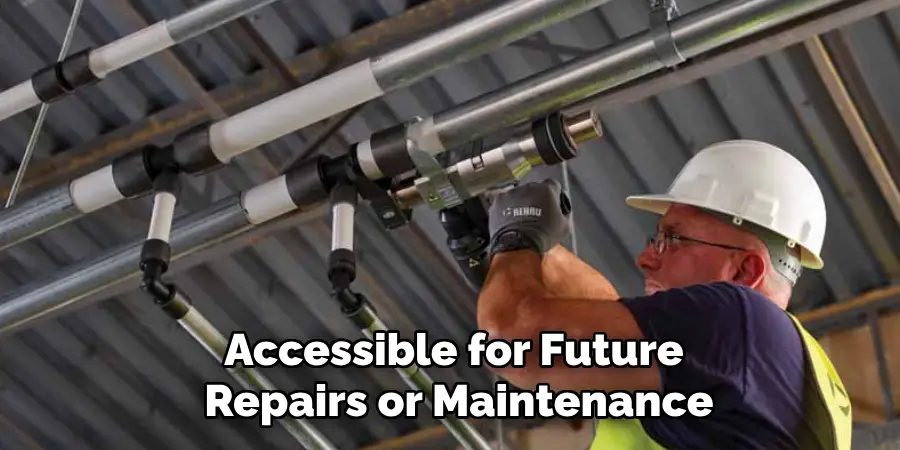
Common Mistakes to Avoid
Ignoring Local Building Codes:
One of the most crucial mistakes to avoid is neglecting to adhere to local building codes and regulations. Non-compliance can lead to safety hazards, fines, and the need for costly modifications. Always ensure that your covering methods meet the necessary standards and guidelines.
Improper Insulation Installation:
Incorrectly installed insulation can be ineffective and lead to problems such as pipe freezing or condensation build-up. Make sure insulation materials are securely fastened and cover the entire length of the exposed PEX pipe to provide adequate protection.
Using Inappropriate Materials:
Selecting the wrong materials for covering PEX pipes can result in inadequate protection and potential damage. For instance, materials that are not fire-resistant or durable enough to withstand environmental factors may fail to protect the pipes effectively. Choose materials specifically designed for plumbing applications.
Overlooking Accessibility:
Making PEX pipes completely inaccessible for future maintenance or repairs is a common oversight. Always design coverings that can be easily removed or have built-in access panels to facilitate quick and uncomplicated access to the pipes.

Conclusion
Covering exposed PEX pipes is a practical consideration that enhances both the aesthetics and functionality of your living space. Whether you choose to use decorative elements, durable housings, or insulation methods, it is essential to keep key factors like accessibility, insulation, aesthetics, and durability in mind.
Additionally, compliance with local building codes and regulations is paramount to ensure safety and legality. By thoughtfully planning and executing your pipe covering project, you can successfully protect your plumbing system while also contributing to the overall decor and ambiance of your environment. Thanks for reading, and we hope this has given you some inspiration on how to cover exposed pex pipe!

